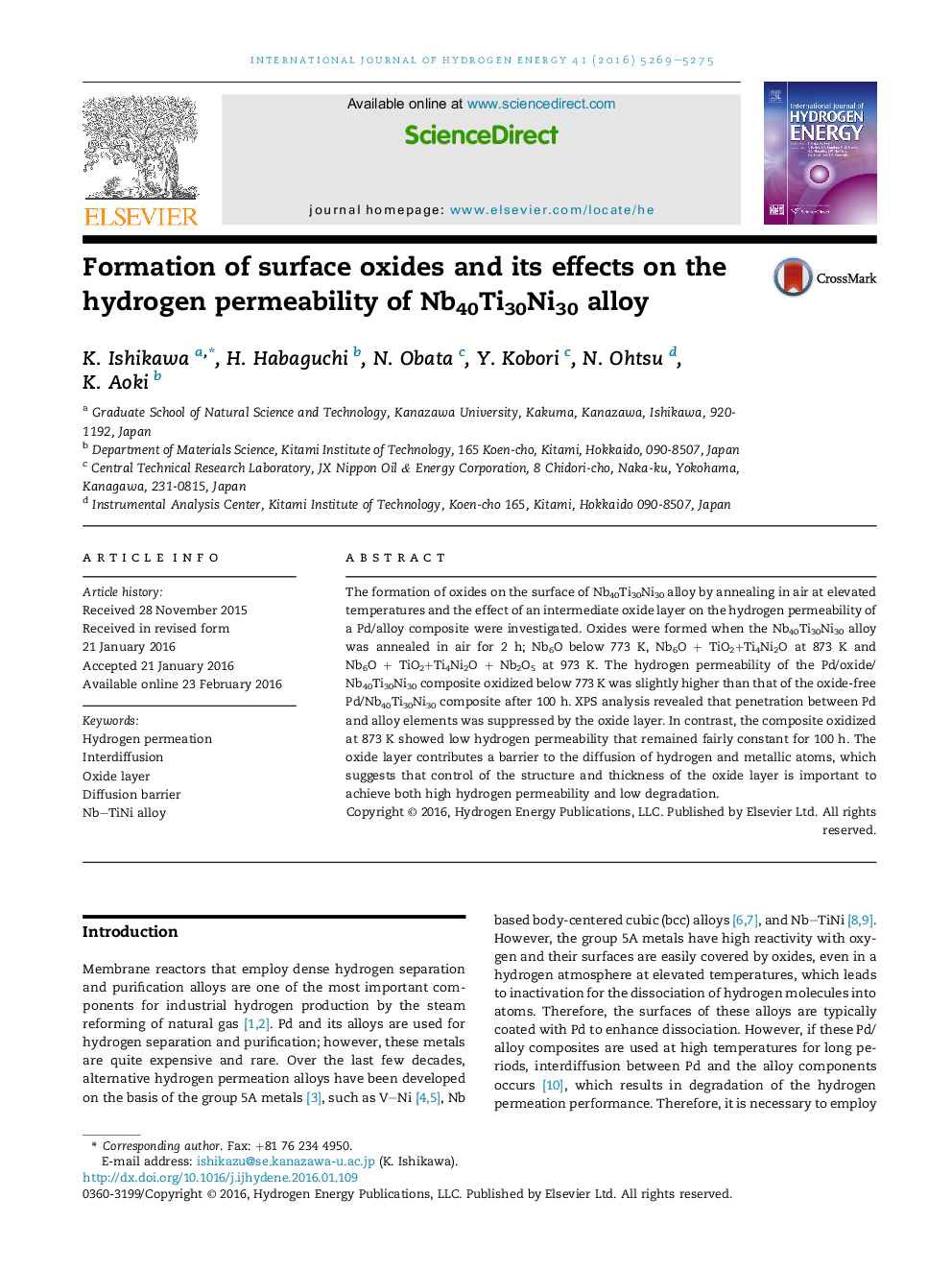| Article ID | Journal | Published Year | Pages | File Type |
|---|---|---|---|---|
| 1270964 | International Journal of Hydrogen Energy | 2016 | 7 Pages |
•Severe degradation of hydrogen permeability of Pd/Nb–TiNi alloy above 773 K.•Oxides are formed on surface of Nb–TiNi alloy by annealing in air.•Formation of oxides; Nb6O below 773 K, TiO2 and Ti4Ni2O at 873 K.•Interdiffusion between Pd and other atomic elements are suppressed by Nb6O layer.•High Pd concentration on the top surface of the oxidized sample after permeation.
The formation of oxides on the surface of Nb40Ti30Ni30 alloy by annealing in air at elevated temperatures and the effect of an intermediate oxide layer on the hydrogen permeability of a Pd/alloy composite were investigated. Oxides were formed when the Nb40Ti30Ni30 alloy was annealed in air for 2 h; Nb6O below 773 K, Nb6O + TiO2+Ti4Ni2O at 873 K and Nb6O + TiO2+Ti4Ni2O + Nb2O5 at 973 K. The hydrogen permeability of the Pd/oxide/Nb40Ti30Ni30 composite oxidized below 773 K was slightly higher than that of the oxide-free Pd/Nb40Ti30Ni30 composite after 100 h. XPS analysis revealed that penetration between Pd and alloy elements was suppressed by the oxide layer. In contrast, the composite oxidized at 873 K showed low hydrogen permeability that remained fairly constant for 100 h. The oxide layer contributes a barrier to the diffusion of hydrogen and metallic atoms, which suggests that control of the structure and thickness of the oxide layer is important to achieve both high hydrogen permeability and low degradation.
